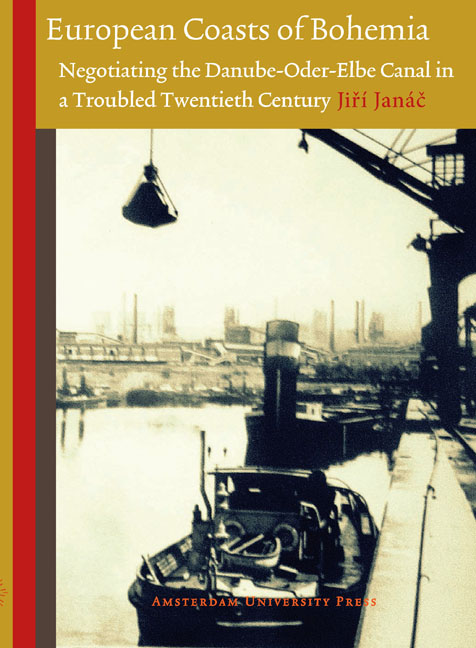3 - Canal as Artery for Nazi Expansion
Published online by Cambridge University Press: 10 December 2020
Summary
Some members of the [Czechoslovak] parliament had the opportunity to see the advancement of waterway constructions in Germany. Huge investments are directed into waterways there. Germany does not fear, as we do, that by constructing waterways, the future of the railways might be endangered. Germany is fully aware of the national economic importance of waterways and does not regret any costs. Canals are being built there, connecting one river to the other …
Mr. Josef Chalupník, Prague, December 15, 1937
In December 1937, during a Czechoslovak parliamentary hearing on the state budget, a Silesian MP named Josef Chalupnik tried to persuade the National Government of the need for transport infrastructure investments in general and the vital importance of constructing the Danube-Oder-Elbe canal in particular. Reading between the lines, the strong and rather explicit message was: follow the courageous and progressive example of Germany, let's do it the German way!
The German annexation of so-called Sudetenland (border regions of former Czechoslovakia with an ethnically German majority) changed the territorial shape of the country. The annexation also transformed the atmosphere in society. The Munich Agreement, signed by the leading European powers in the early hours of September 30, 1938, turned the independent Czechoslovak State into a defenseless island surrounded by Nazi Germany. The truncated republic lingered on under the shadow of Nazism and the previously feared Germany suddenly became the official exemplar of successful organization of state affairs.
This development had a direct and instant effect on the Danube-Oder-Elbe (DOE) canal negotiations. Borders now interrupted the canal route, previously located exclusively on Czechoslovak territory. Together with the antecedent Nazi Anschluss of Austria (March 1938), the annexation of Czechoslovak Sudetenland put both ends of the proposed artificial waterway into German hands (the upper Oder in Czechoslovak Silesia, as well as the mouth of the Morava into the Danube by Děvín, lay within the lands ceded to Germany). The same was true for the summit reservoir, although its connection to the upper Oder remained on Czechoslovak soil. The redrawing of the map also caused other indirect complications. By occupying part of the Upper Oder river basin, Germany separated the planned water reservoirs of Spálov and Kružberk from the part of the canal these structures should supply with additional water.
- Type
- Chapter
- Information
- European Coasts of BohemiaNegotiating the Danube-Oder-Elbe Canal in a Troubled Twentieth Century, pp. 85 - 130Publisher: Amsterdam University PressPrint publication year: 2013



